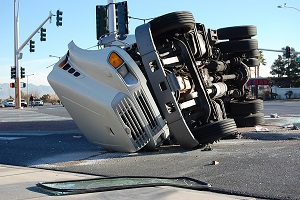 Accidents happen, but that doesn’t make them any less devastating. A history of frequent or severe incidents can raise your fleet’s premiums at a time when commercial auto insurance rates are already increasing and coverage may be harder to secure.
Accidents happen, but that doesn’t make them any less devastating. A history of frequent or severe incidents can raise your fleet’s premiums at a time when commercial auto insurance rates are already increasing and coverage may be harder to secure.
According to an AM Best report, U.S. commercial automobile insurance underwriting losses reached a staggering $4.0 billion in 2019, the worst it’s been in a decade. Losses have grown faster than premiums, and the segment’s combined ratio deteriorated by 1.4% to reach 109.4% in 2019. Because of the social inflation trend and the increase of nuclear verdicts – like the $411 million verdict against a trucking company awarded by a jury in Florida – even a single crash can lead to major financial consequences.
Large Truck and Bus Crash Facts
The FMSCA’s most recent Large Truck and Bus Crash Facts report covers 2018. The figures in this report show that the number of trucks involved in crashes has been increasing.
- In 2018, 5,096 large trucks and buses were involved in fatal crashes. This is a 1% increase from 2017 and a 48% increase from the low reached in 2009.
- In 2018, there were 121,000 injury crashes involving large trucks and buses. This is an 8% increase from 2016.
- From 2017 to 2018, the number of large trucks involved in fatal crashes increased 1%, the number of large trucks involved in injury crashes increased 5%, and the number of large trucks involved in crashes that caused property damage increased 14%.
The report also provides some important details about the crashes, including when, where and how they tend to occur.
- 83% of fatal crashes and 88% of nonfatal crashes involving large trucks occurred Monday through Friday.
- 36% of all fatal crashes occurred between 6:00 pm and 6:00 am.
- 57% of fatal crashes involving large trucks occurred in rural areas and 26% occurred on interstate highways.
- In 73% of fatal crashes involving large trucks, the first harmful event was a collision with a vehicle in transport. In 4% of all fatal crashes involving large trucks, a rollover was the first harmful event.
There is also some information about the drivers and possible factors that may have contributed to the crash or to the fatalities and injuries.
- 7% of large truck drivers involved in fatal crashes were 25 years or younger.
- 45% of large truck occupants who were involved in fatal crashes and were not wearing a safety belt were killed, while only 8% of large truck occupants who were involved in fatal crashes and were wearing a safety belt were killed.
- 6% of large truck drivers involved in fatal crashes tested positive for at least one drug. However, it’s important to note that 60% of drivers were not tested.
- Speeding was the most frequently recorded driver-related factor for large truck drivers involved in fatal crashes. Distraction and inattention were the second most common factor.
2019 and 2020
Although we have less information about crashes in 2019 and 2020, there are some numbers we can look at.
- The FMSCA reports 163,888 crashes involving large trucks in 2019, a decrease from 2018, when there were 166,783 crashes. The number of fatalities involving large trucks has also gone down slightly, from 4,981 in 2018 to 4,768 in 2019.
- Between January 1, 2020 and June 30, 2020, the number of crashes involving large trucks was 65,545. For comparison, there were 78,268 large truck crashes in the same time period in 2019.
So far, it looks like the crash rates for 2020 may be significantly lower. This may be the result of the pandemic and reduced traffic. However, to keep these numbers down, safety measures are as important as always.
